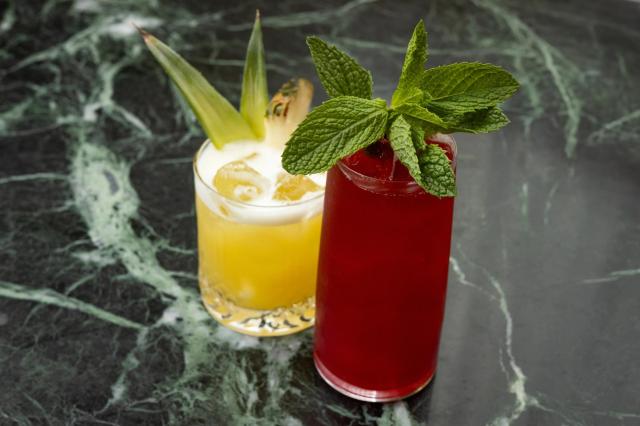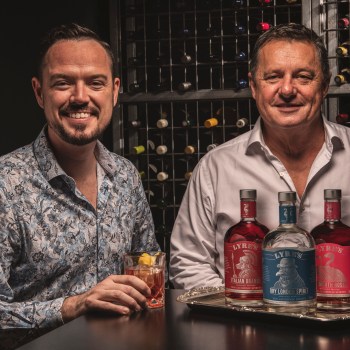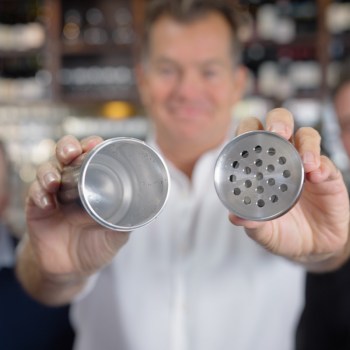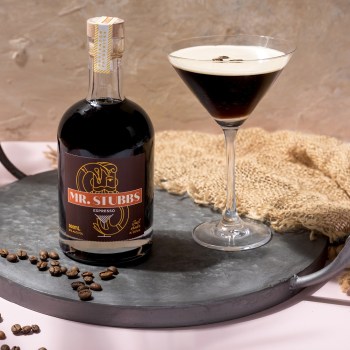In recent years, consumer demand for better-for-you beverages and healthier alternatives has made its way to the on-premise, resulting in the expansion of the no- and low-alcohol category.
Recent data from the IWSR reveals that 31 per cent of Australian consumers are now purchasing non-alcoholic drinks, and Andrew Lewis, CEO of hospitality training provider Allara Global, believes that interest in alcohol-free drinks aligns with a cultural shift towards a more balanced lifestyle.
“Even regular drinkers are looking for appealing non-alcoholic options, or to avoid drinking altogether for certain periods of time. Bartenders should keep advancing and upgrading their skills to meet the demand of sober-curious patrons,” he says.
This trend has sparked a wave of growth across all categories, and with volumes of non-alcoholic beverage sales growing year-on-year, alcohol-free cocktail lists are slowing becoming commonplace in bars and clubs.
Award-winning mixologist Marco Nunes says that this distinct shift in drinking behaviours is heavily influenced by Millennial and Gen Z consumers.
“Young patrons especially are increasingly discerning with non-alcoholic options. They have high expectations in terms of choice and taste in everything from beer to cocktails.”
At Pincho Disco in Melbourne, Bar Manager Dustin Sarten says that although non-alcoholic cocktails have often sat in the shadow of alcoholic cocktails, they are seeing moderate success in the Latin American bar, and just last week the venue hosted an event that moved the focus towards non-alcoholic cocktails.
One trend that Dustin has identified within the non-alcoholic cocktail space is the preference for quality over quantity, and a movement towards replicating alcohol.
“As people become more educated around drinks and cocktails, they also become more discerning. Often opting for healthier options or more uncommon flavours,” he says.
“Anecdotally, I’ve noticed that those who partake in non-alcoholic options are more likely to be found in groups of coworkers, family gatherings, or ‘obligated’ social gatherings. In these situations, there is a benefit to remaining sober and in control.”
According to the IWSR, the global sobriety trend shows no signs of slowing down, with the data market analysis firm forecasting that no- and low-alcohol consumption will increase by a third by 2026, spearheaded by demand for alcohol-free beverages.
Marc Romanin, Marketing Manager at non-alcoholic spirit company Lyre’s, sees this as an opportunity for venues to drive revenue.
“Having a sophisticated non-alcoholic offering that caters to drivers, moderators and abstainers allows the simple trade up from a soft drink, water or mocktail into something that has high repeat order rates and increases spend per head.”
For Dustin, the focus of a bartender should always be to look after their customers, and he believes that removing any prejudice around drinking alcohol-free cocktails is the first step in catering to non-drinkers.
“The creation and delivery of these drinks should be approached with the same care as any cocktail. Having an adequate selection is important, but also having the ability to cater to specific demands and variations, much in the same way as customising classic cocktails.
“Variation is very important, as there are often much less listed than their alcoholic counterparts. A good test for any non-alcoholic cocktail, is that if it had alcohol in it, would it be on your cocktail menu? The other [consideration] is whether you would comfortably drink more than one, this means it is balanced and refreshing.”



